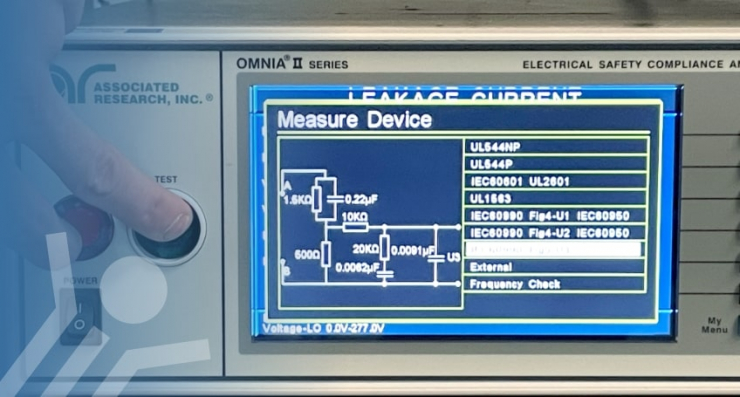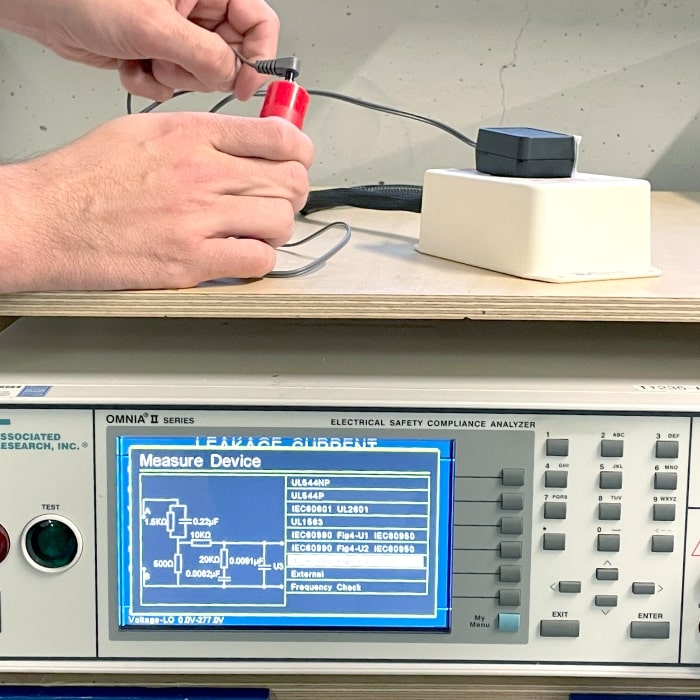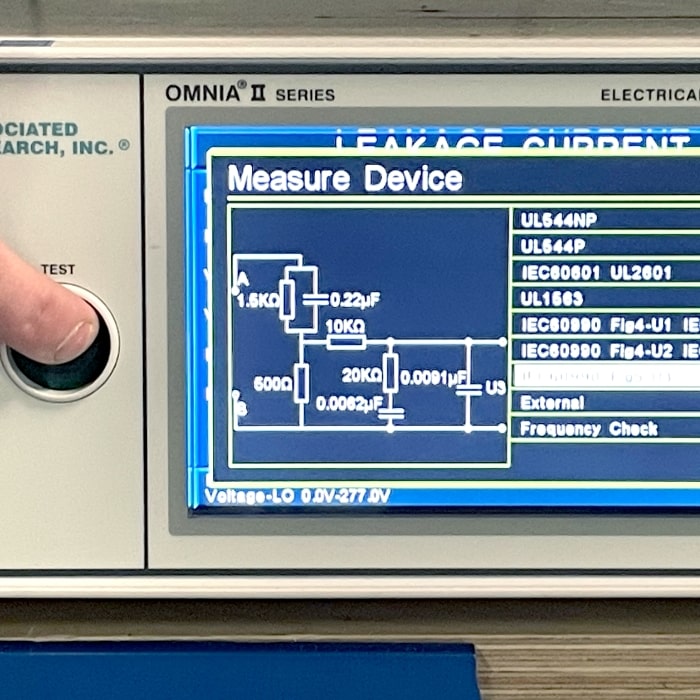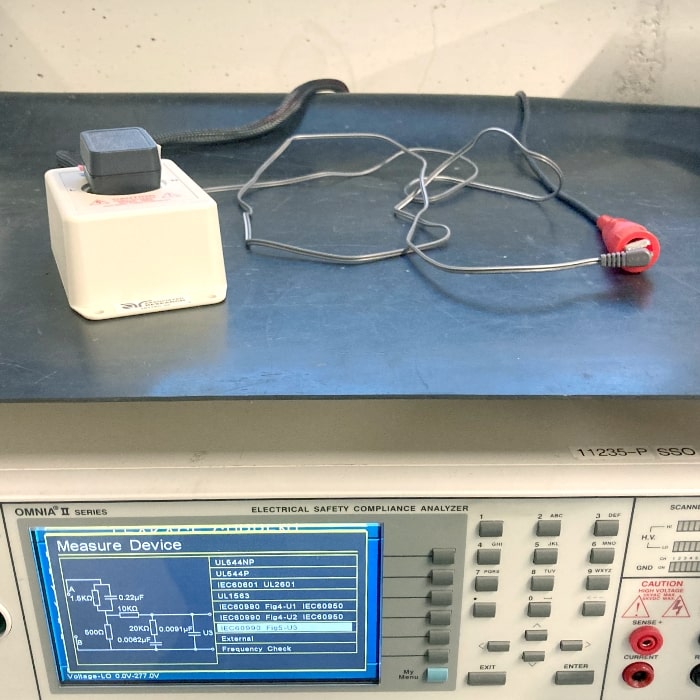Leakage current and protective conductor current measurement
Electronic devices are becoming ever more complex and therefore also cause EMC faults more and more frequently. This risk can be reduced. For example, by having compensating currents touched by the corresponding components such as Y-capacitors of live parts or by having them flow via the protective conductor. During this, currents with a dangerous voltage, which originate from the mains supply network, may not be exceeded both during normal operation of the device as well as if there is a fault. In addition, the leakage currents of insulating materials are also measured.
During this test, a defined mains voltage is applied to the test specimen. In the case of devices with a protective conductor connection, (protection class I) the current flowing through the protective conductor is measured directly. Here, according to the standard, a limit of just a few milliamperes may not be exceeded. Device parts that do not have a protective conductor (protection class II), but are connected to an insulation, are acquired through a special measurement principle, which simulates the human body. During this measurement, the permitted limit values are significantly lower and are of the order of a few hundred milliamperes.
Examples of the standards and methods in this domain are:
- EN 62368-1 section 5.2.2.2
- EN 60598-1 section 10.3
- EN 61010-1 section 6.3




Testing? Treo
ELECTRICAL SAFETY
Testing areas:



